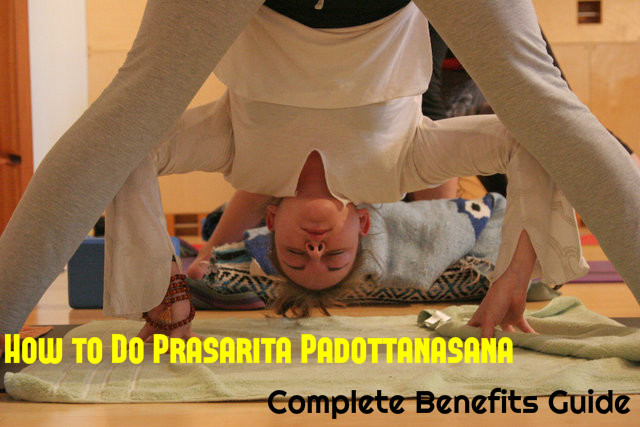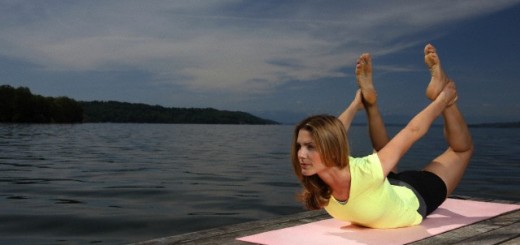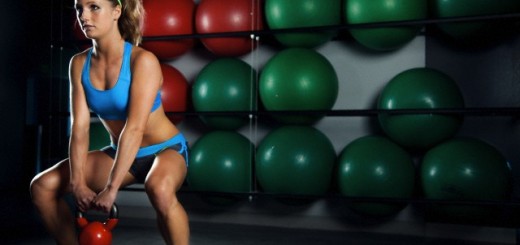How to Do Prasarita Padottanasana: Complete Benefits Guide
Prasarita Padottanasana helps in expanding and healing your body, especially after doing exercises like cycling, running and walking. Prasarita means wide/stretched out and pada means foot. The meaning of Uttana is intense stretch and asana means pose. This asana is usually practiced after practicing the standing poses. This is a good predatory pose for inversions. This pose gives a good stretch to the hamstrings as well as the back.
Image Credits: Flickr
What you should know before you start practicing this asana?
Remember that you should do this asana only on an empty stomach. Have your meals about 6 hours before you do this pose. This provides enough time for your body to digest the food. The ideal way is to keep a gap of 11 to 12 hours between your meals and the practice. So, it is best to practice it in the early morning. However, if it is impossible for you to practice it in the morning, you may practice it in the evening. Make sure that your bowels are clear when you practice it.
- Level: basic
- Style: Vinyasa flow
- Duration: 30 to 60 seconds
- Repetition: None
- Stretches: Vertebral column, legs
- Strengthens: Vertebral column, legs
How to do Prasarita Padottanasana (Wide-Legged Standing Forward Fold)?
- Stand in Tadasana pose at the front of your yoga mat.
- Inhale and take a step back with your right foot, so that your body is facing the long edge of the mat.
- Stretch your hands in such a way that they are at your shoulder level and right above your feet. Now you can bring your hands to your hips.
- Inhale and try to lengthen your chest and heart towards the sky. Stretch your torso well. Now you have to exhale and bend forward, so that your fingertips touch the mat that is in front of you.
- As you bend down and stretch, bring the crown of your head to the ground and try to push the buttocks towards the ceiling. Engage your abdominal muscles also as you stretch your spine.
- You can place your hands either underneath your legs or on your mat, besides your head. Keep your elbows bent. You may also hold your big toes with your hands.
- Remain in this pose for about a minute. As you do so, breathe deeply and slowly. Now you can walk your hands forward, so that your torso is parallel to the floor. Engage your spine fully and bring your hands to your hips. Inhale and then you can lift your torso up. Get back to the Tadasana pose.
Contraindications and Cautions:
Keep in mind the following points when you do this asana.
- If you are suffering from any pain or injury in the lower back, you should never do this asana.
- It is also better to avoid this asana if you suffer from sinus congestion.
Tip for Beginners:
In the beginning it may not be possible for you to touch the ground with the crown of your head. Try to attempt it only as much as is possible for you. You can use a blanket, a padded block or a bolster to support your head in that case.
How to advance in this pose?
If you want to advance in this pose, you can do so by using a block and working your arms when you are in this pose. For this, you have to set a block on one side of the mat on the floor in front of you. As you bend forward, try to grip this block in such a way that it is in between your forearms and just below your elbows. Now pick it up. To complete the pose, you have to place your palms on the floor and then squeeze the block between your forearms. Keep the inner side of your hands pressed firmly on the ground. This action is a good preparatory pose for arm stands.
Benefits of Prasarita Padottanasana or Wide-legged forward pose:
Here are some of the wonderful benefits of this asana:
- Practicing this asana regularly provides a good stretch to your back, inner part of your legs, as well as the spine.
- You can tone your abdominal organs with regular practice of this asana. This helps in improving the digestive process.
- It is also good for calming your brain
- With regular practice of this asana, you will get relief from backaches, fatigue and headaches. It is also good for getting rid of mild depression.
Scientific reasons behind behind prasarita padottanasana:
When you feel that you are in a balanced state, which means midway between overcharged and empty, this state is called Sattva. In this state you feel relaxed, happy and energized. Sattva helps you to find spiritual illumination and radiant health. When you are in this state you are alert and also at ease. You feel uplifted, but you are also grounded.
When you practice prasarita padottanasana you get a chance to explore your Sattva. You become clear-headed and harmonious. You feel the earthiness in your lower body, but your mind is uplifted and slips into tranquility. You legs are always steady and strong, and rooted to the ground. You feel that your heart and head are calm and cleansed. So, this asana is very beneficial for those who suffer from anxiety and tensions. It acts as a balm for anxious nerves.
Preparatory poses of prasarita padottanasana:
- Adho mukha svanasana
- Uttanasana
- Supta baddha konasana
Follow-up poses to do:
- Badha konasana
- Utthita parsvakonasana
- Janu sirasana
- Bakasana
- Paschimottasana
With its immense benefits, Prasarita Padottanasana is great for those who want peace of mind. It also makes you more alert to your surroundings. So, practice it regularly and experience the difference it make t you.




